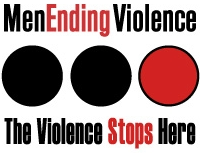Every survivor of violence knows what it means to calculate risk in an instant. Sometimes survival looks like running, sometimes like fighting back. But often it looks like compliance — a smile to defuse anger, a “yes” to avoid worse harm. This is fawning, and it is as much a trauma response as fighting, freezing or fleeing. Yet in courtrooms across Canada, it is misunderstood as consent, leaving survivors unprotected and
unheard.
Fawning is not a sign of weakness. It is a survival strategy that develops under conditions of coercion, threat, and control. The survivor aligns themselves with the demands of the one in power most often the abusive party, not out of desire but out of necessity. In many cases, it is the only way to stay alive in a moment where resistance could trigger further violence including lethal violence. Despite this reality, the justice system has no framework to interpret fawning. Instead, compliance is misread as willingness. In a country where sexual assault is rarely prosecuted and convictions are rarer still, this gap has devastating consequences.
From an early age, women and girls are conditioned under patriarchy to anticipate male anger and to minimize it. They are taught to smile, to smooth over tension, to soothe men’s emotions in order to avoid punishment. These lessons are reinforced in families, schools, workplaces, and intimate relationships, where power is unequally distributed and male authority often goes unquestioned. What is framed as “female politeness” is in fact a set of survival behaviours under male dominance. Fawning is not only an individual trauma response but also a reflection of systemic gender inequality that normalizes women’s submission to men’s demands.
This conditioning is so deeply normalized that when it surfaces in sexual assault cases, courts interpret it as proof of consent. Judges, prosecutors, and defence lawyers work within a legal framework built on patriarchal notions of sexuality, where men’s pursuit is assumed and women’s resistance is demanded in order for “no” to be taken seriously. The result is that survival strategies like placating, freezing, or silence are weaponized against survivors, reinforcing male power in the courtroom just as it operates in the home or on the street. The law’s blindness is not neutral rather it actively protects perpetrators while punishing women for doing what they had to do to survive.
Recent high-profile cases in Canada illustrate this clearly. In acquitting five former members of Canada’s world junior hockey team on sexual assault charges, the court dismissed the survivor’s fear as irrelevant.
The defence argued that there is “no consent-vitiating level of fear,” suggesting that unless a woman actively resisted, the law must see her actions as agreement. This interpretation reflects a patriarchal logic that centres men’s desires and dismisses women’s realities. It also reveals the structural power imbalance in play: young men backed by institutions of sport and law are granted credibility, while a woman’s fear and survival strategies are erased.
The consequences extend far beyond any one trial. In family court for instance, survivors are discouraged from disclosing intimate partner violence because their trauma responses will be turned against them.
Perpetrators learn that compliance under pressure can be twisted into a shield against accountability. Families are left to grieve in the aftermath of preventable violence. All of this occurs within a justice system designed to preserve male authority rather than challenge it. What is at stake is not only the failure to prosecute individual cases, but the broader normalization of male violence as a tolerated feature of society.
A survivor-centred system would centre something different. It would recognize that strategies that women…and girls deploy for survival cannot be divorced from the unequal power relations that shape them. It would take seriously the ways patriarchy constrains women’s choices and forces compliance as a means of staying alive. It would require police, prosecutors, and judges to see fawning not as consent but as evidence of coercion, fear, and structural inequality. To do otherwise is to continue siding with male power at the expense of women’s safety.
The stakes are not abstract – based on numbers from 2019 gender-based violence is escalating across Canada while femicides have also increased. Service providers like ours are witnessing unprecedented numbers of women, girls and gender-diverse people reaching out for help. In this context, the refusal to recognize fawning is not simply a technical legal flaw. It is part of a larger pattern in which institutions uphold patriarchal dominance by denying the full reality of violence, leaving survivors to carry the consequences alone.
Survivors should not be penalized for the ways they manage to stay alive, because compliance under duress is not consent and silence in the face of threat is not agreement. Fawning is a survival strategy born out of fear and enforced by patriarchy, and until our justice system acknowledges this truth, it will continue to deny justice.
We call on legislators, prosecutors, and judges to engage with this reality, to confront the failure of the current legal framework, and to take responsibility for reform.
Survivors cannot afford another decade of neglect. The time to change the way our courts see survival is now.




